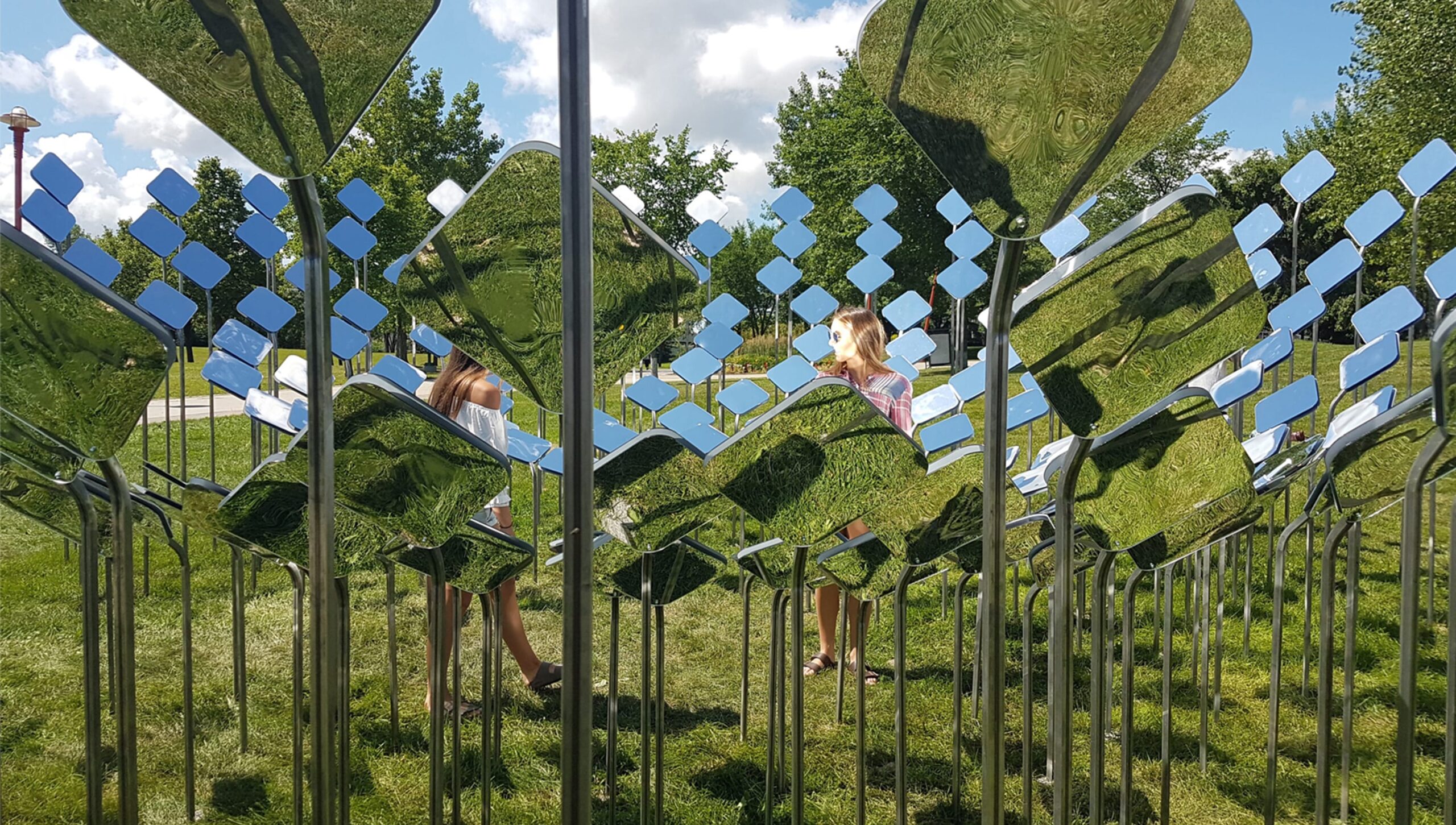
In 2017 MBAC was invited to participate in the Cool Gardens exhibition in Winnipeg, MB for the summer of 2017. Cool Gardens is administered by Storefront MB, with support offered by The Forks.
Our installation, Bend, hangs on the convergence of two visual planes – the sky and the earth. While these two separate planes never touch in actuality, our experience and frame of reference is and will always be subject to a horizon line, and thus, a meeting point. Through an aggregation of mirrors, two resulting sheets of reflection serve to create a new virtual plenum – a third and alternative visual space. While our expression of the physical ‘garden’ is contained, the installation’s inherent celebration of negative space projects an open-ended image. As the age-old definition of the ‘garden’ becomes the critical point of focus, Bend presents the garden as an experiential field – one that is scalable. In its concave capacity, it offers a single point of reference, an interior provision; conversely, its convex boundaries serve to project its surroundings, thereby celebrating its Canadian context. From prairie to ocean, Bend exists in the servitude of Canadian culture, landscape, and the meditative space that envelops the contemporary potential of the garden. Subject to the time of day, the movement of the clouds, and seasonal conditions, it was our hope that visitors would be treated to an ephemeral experience, and alternative sense of vision.
In 2017 MBAC was invited to participate in the Cool Gardens exhibition in Winnipeg, MB for the summer of 2017. Cool Gardens is administered by Storefront MB, with support offered by The Forks.
Our installation, Bend, hangs on the convergence of two visual planes – the sky and the earth. While these two separate planes never touch in actuality, our experience and frame of reference is and will always be subject to a horizon line, and thus, a meeting point. Through an aggregation of mirrors, two resulting sheets of reflection serve to create a new virtual plenum – a third and alternative visual space. While our expression of the physical ‘garden’ is contained, the installation’s inherent celebration of negative space projects an open-ended image. As the age-old definition of the ‘garden’ becomes the critical point of focus, Bend presents the garden as an experiential field – one that is scalable. In its concave capacity, it offers a single point of reference, an interior provision; conversely, its convex boundaries serve to project its surroundings, thereby celebrating its Canadian context. From prairie to ocean, Bend exists in the servitude of Canadian culture, landscape, and the meditative space that envelops the contemporary potential of the garden. Subject to the time of day, the movement of the clouds, and seasonal conditions, it was our hope that visitors would be treated to an ephemeral experience, and alternative sense of vision.
